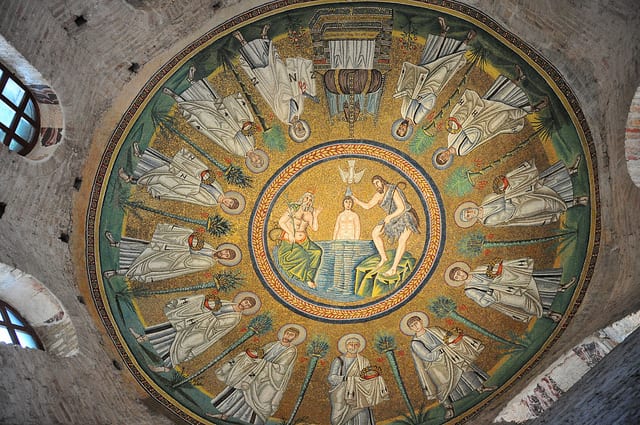Some conclusions from historian Everett Ferguson’s magisterial 975-page tome, Baptism in the Early Church: History, Theology, and Liturgy in the First Five Centuries (Eerdmans, 2009):
Is there evidence for infant baptism exist before the second part of the second century?
“There is general agreement that there is no firm evidence for infant baptism before the latter part of the second century.” (p. 856)
Does this mean that infant baptism didn’t exist?
“This fact does not mean that it did not occur, but it does mean that supporters of the practice have a considerable chronological gap to account for.
“Many replace the historical silence by appeal to theological or sociological considerations.” (p. 856)
Why did infant baptism emerge?
“The most plausible explanation for the origin of infant baptism is found in the emergency baptism of sick children expected to die soon so that they would be assured of entrance into the kingdom of heaven.” (p. 856)
When did it catch on and become the dominant understanding of baptism?
“There was a slow extension of baptizing babies as a precautionary measure.
“It was generally accepted, but questions continued to be raised about its propriety into the fifth century.
“It became the usual practice in the fifth and sixth centuries.” (p. 857)
What was the mode of baptism in the early church?
“The comprehensive survey of the evidence compiled in this study give a basis for a fresh look at this subject and seeks to give coherence to that evidence while addressing seeming anomalies.
“The Christian literary sources, backed by secular word usage and Jewish religious immersions, give an overwhelming support for full immersion as the normal action.
“Exceptions in cases of a lack of water and especially of sickbed baptism were made.
“Submersion was undoubtedly the case for the fourth and fifth centuries in the Greek East and only slightly less certain for the Latin West.” (p. 857)
Was this (1) a change from an earlier practice, (2) a selection out of options previously available, or (3) a continuation of the practice of the first three centuries?
“It is the contention of this study that the last interpretation best accords with the available facts.
“Unless one has preconceived ideas about how an immersion would be performed, the literary, art, and archaeological evidence supports this conclusion.” (p. 857)
For a different perspective on the evidence, see Anthony N.S. Lane, “Did the Apostolic Church Baptise Babies? A Seismological Approach,” Tyndale Bulletin 55, no. 1 (2004): 109–30.
The abstract is below:
The direct evidence from the first century is insufficient to establish conclusively whether or not the apostolic church baptised babies.
An alternative approach is to look at the practice of the post-apostolic church and to ask what must have happened in apostolic times to account for this later development.
Unequivocal evidence is not found until the beginning of the third century and for the next two centuries and more we see a variety of practice, with the children of Christian homes being baptised at any and every age.
Significantly, no one claimed that anyone else’s practice was unapostolic or wrong in principle.
Given that oral tradition offered real, though limited, access to the past, the most natural explanation is that this acceptance of a variety of practice goes back to apostolic times.
